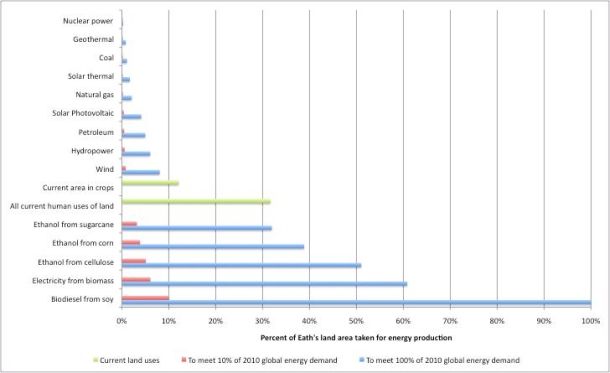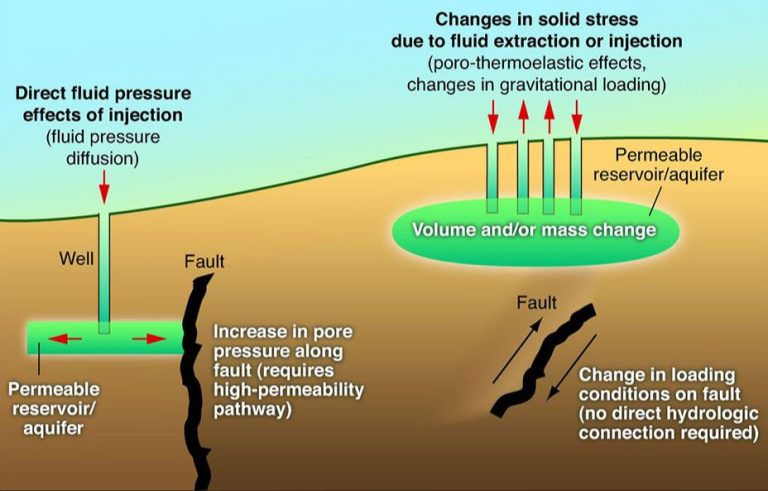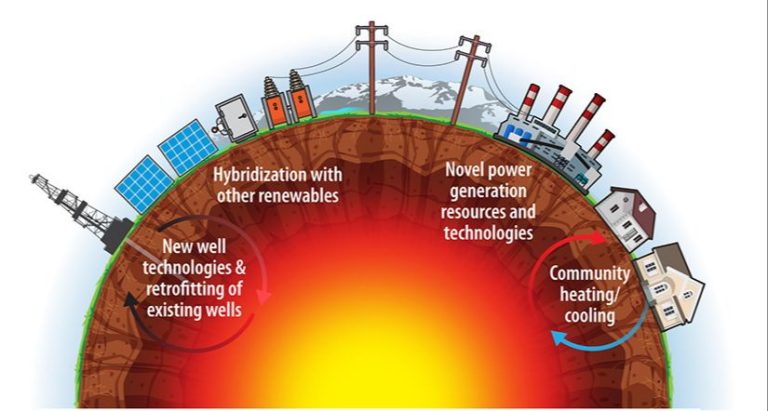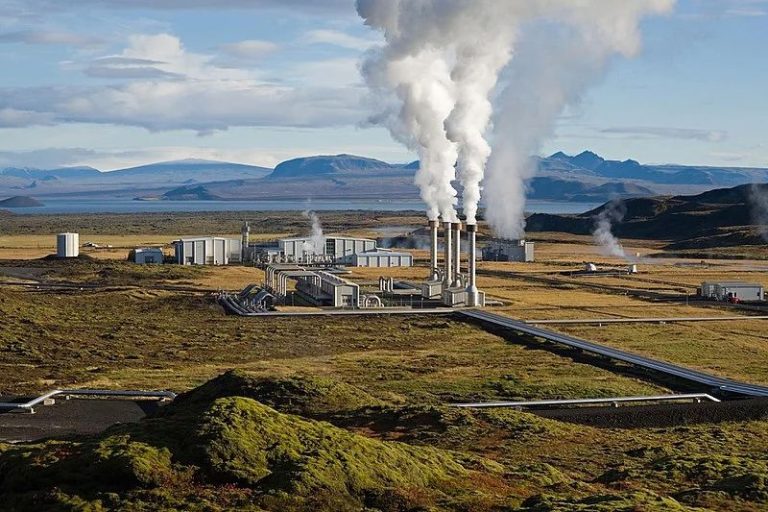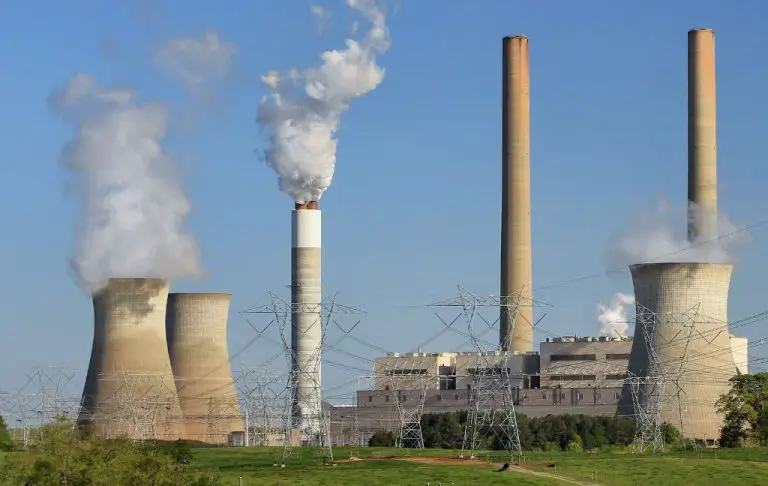What Are The Steps To Generate Electricity In A Geothermal Power?
Geothermal energy is thermal energy generated and stored in the Earth (geo meaning earth, thermal meaning heat). It is a renewable source of energy that utilizes the natural heat within the earth’s crust to generate electricity and provide heating and cooling. Unlike fossil fuels which draw on finite resources, geothermal energy taps into the earth’s natural heat flow for an endless supply of clean energy.
Geothermal energy is considered a baseload source of electricity, meaning it provides a continuous supply. Geothermal power plants operate at average capacity factors of 90-95%, compared to around 30-40% for wind and solar power. The constant availability of geothermal energy makes it a highly reliable renewable energy source.
Geothermal energy has several key benefits over other energy sources:
- It is sustainable and environmentally friendly. Geothermal energy production results in very low emissions.
- It utilizes a free local resource and does not rely on external fuel sources.
- It provides reliable baseload power not subject to weather variations.
- The small land footprint reduces habitat disruption.
With advanced technologies, the global potential for geothermal power generation is estimated around 200 gigawatts, equivalent to thousands of coal power plants. Tapping into the earth’s natural heat offers a clean and renewable solution to meet increasing energy demands.
Locating a Geothermal Resource
Locating viable geothermal resources requires understanding the geological conditions that allow reservoirs of hot water or steam to form beneath the Earth’s surface. Geologists look for areas with relatively recent volcanic activity and certain rock types like granite that can more easily transmit geothermal heat. They also look for fault lines and fractures that allow hot fluids to rise up from deep inside the Earth.
Two key methods used for finding potential geothermal sites are geochemical analysis and geophysical surveying. Geochemical analysis studies the chemical composition of water from hot springs and wells to estimate subsurface temperatures. Geophysical surveys use techniques like seismic imaging and electrical resistivity to map geologic structures and estimate temperatures and fluid content underground.
Drilling exploratory wells is the only way to directly confirm a viable geothermal resource. Once promising sites are identified, slim holes may be drilled before larger production wells to measure temperatures and flow rates. Tracer chemicals can also be injected to understand subsurface fluid connections. If wells produce sufficient hot water or steam, the site can be developed into a geothermal power plant.
Drilling Geothermal Wells
Drilling wells to access geothermal resources requires advanced techniques and technologies compared to drilling for water or oil. Geothermal reservoirs are located deep underground, usually between 5,000 and 20,000 feet, requiring specialized equipment and expertise to reach (Energy.gov, 2022).
Directional drilling, where the wellbore is deviated from vertical, is often used for geothermal wells. This allows multiple wells to be drilled from a single well pad, reducing land usage. It also enables wells to more precisely intersect the target geothermal reservoir (NREL, 2022).
Rotary drilling is the most common technique for drilling geothermal wells. High strength drill pipe and drilling muds are used to withstand the high temperatures at depth. The drilling mud also serves to lubricate and cool the drill bit and carry rock cuttings to the surface (Energy.gov, 2022).
Casing the wellbore with steel pipe and cement is critical to prevent fluids from migrating between geologic layers. Special high-temperature cements and casings are required. Production casing reaches the geothermal reservoir and brings hot fluids to the surface (NREL, 2022).
Drilling geothermal wells requires considerable expertise and experience to overcome the challenges of high temperature, high pressure conditions. Costs for a single well often exceed $5 million due to the advanced techniques and depths required (Energy.gov, 2022).
Harnessing the Resource
The key to harnessing geothermal energy is bringing the geothermal fluid to the surface from deep underground reservoirs. This is accomplished by drilling wells into the hot underground rock, sometimes up to 10,000 feet deep, to access the high temperature fluid (Department of Energy, 2022). Once accessed, the geothermal fluid (hot water or steam) is brought up through production wells.
If the fluid is in the form of hot water, it can be flashed into steam by reducing the pressure. The steam is then separated from the water in a cyclone separator. The separated steam is piped to a turbine to generate electricity, while the leftover water is injected back into the reservoir through injection wells to be reheated (University of Florida, n.d.). For reservoirs already producing mostly steam, the steam is piped directly to the power plant.
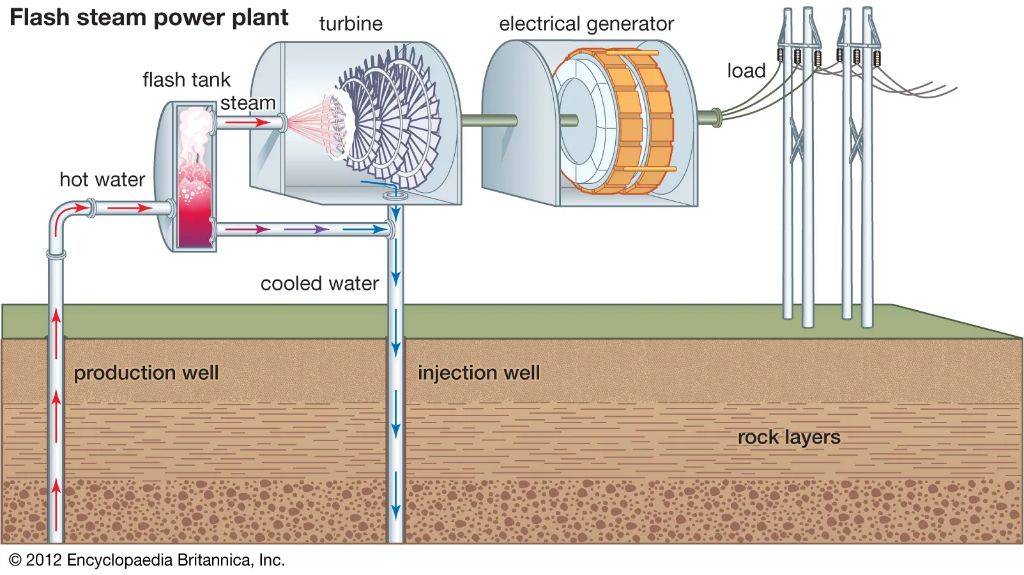
Electricity Generation
Geothermal power plants generate electricity by harnessing naturally occurring reservoirs of hot water found deep underground. These geothermal reservoirs can reach temperatures over 300°C. The high temperature water is brought to the surface and used to heat a secondary fluid which flashes to steam. This steam then drives turbines that power generators to produce electricity.
According to the U.S. Department of Energy’s Office of Energy Efficiency and Renewable Energy, “Geothermal power plants draw fluids from underground reservoirs to the surface to produce steam. This steam then drives turbines that generate electricity.” https://www.energy.gov/eere/geothermal/electricity-generation
The National Renewable Energy Laboratory also explains that “Geothermal power plants use steam to produce electricity. The steam comes from reservoirs of hot water found a few miles or more below the earth’s surface.” https://www.nrel.gov/research/re-geo-elec-production.html
Power Plant Components
Two main types of power plants utilize geothermal energy to produce electricity, binary cycle plants and flash steam plants. Both types of plants have key components to make this conversion process possible.
A steam turbine converts the force of high-velocity steam into rotational energy. Fast moving steam produced from geothermal wells hits the turbine blades, turning the blades and spinning a shaft, which turns a generator to produce electricity. The high internal pressures of the geothermal steam allow it to generate a significant amount of force to spin the turbines.
Condensers are utilized after the steam passes through the turbines to condense the steam back into water. This condensation process creates a vacuum that helps pull steam through the turbine. The condensed water can then be injected back into the geothermal reservoir, allowing it to be reheated and continue the electricity production cycle.
Cooling towers provide cooling to allow the condensed steam to re-condense into water. Cooling towers utilize large fans to blow air into the tower, cooling warm water from the condenser by evaporation. The cooled water is then recycled back through the condenser.
Transformers are utilized to convert the electricity from the generator into voltages suitable for transmission on the electric grid. Step-up transformers increase voltage while reducing current, enabling efficient transmission over long distances.
Binary Cycle Plants
Binary cycle geothermal power plants operate using hot water at lower temperatures than traditional steam plants. In these systems, the geothermal fluid is maintained in a closed loop and never comes into contact with the turbine. Here’s how they work:
The hot geothermal fluid is pumped up from underground through production wells. The hot water then passes through a heat exchanger, where its heat is transferred to a separate closed loop of fluid with a much lower boiling point. This causes the secondary fluid to vaporize into steam, which then spins the turbine. The cooled geothermal water is injected back underground through injection wells to be reheated.[1]
Binary cycle plants have several advantages over traditional geothermal systems:
- They can operate using lower temperature resources down to about 225–360°F, whereas steam plants require temperatures above 360°F. This expands the number of geothermal sites that can be used.
- The geothermal fluid stays in a closed loop, so there is less risk of release of gases or minerals into the atmosphere.
- The secondary loop fluid, usually an organic compound with a low boiling point, can be chosen for optimal power generation efficiency.
- Binary cycle plants have fewer components than flash steam plants, reducing maintenance costs.
Thanks to these advantages, binary cycle technology opened up a much greater portion of geothermal resources for power generation. Binary plants now generate the majority of geothermal power worldwide.[2]
Flash Steam Plants
Flash steam plants are the most common type of geothermal power plant. They utilize naturally occurring hydrothermal fluids that are above 182°C/360°F from deep underground reservoirs. The hot steam flashes into a tank at lower pressure, rapidly converting water to steam. The steam then drives a turbine, which spins a generator to produce electricity. Flash steam plants require very hot fluids and account for about 65% of geothermal installed capacity worldwide.
The largest flash steam plants can generate up to about 140 megawatts (MW) of power. For example, the Geysers in California is the world’s largest geothermal field and contains multiple flash steam plants totaling 1517 MW. At newer sites, binary cycle plants that utilize lower temperature reservoirs are often built instead of flash plants. However, existing large capacity flash steam plants continue to provide reliable clean energy.
Sources:
https://www.energy.gov/eere/geothermal/electricity-generation
Environmental Considerations
Geothermal power plants must manage their environmental impact in areas like water use, emissions, and land impact. Geothermal reservoirs require water to transport heat to the surface. This water is then either injected back into the reservoir or disposed of as wastewater. Plants must monitor reservoir pressures and aquifer levels to sustain the resource over time (UCSUSA). The water pumped from deep underground reservoirs often contains gases like carbon dioxide, hydrogen sulfide, ammonia, and methane. These can be emitted into the atmosphere if not properly controlled by the plant. Emission control systems like condensers, scrubbers, and filters are critical. Some locations also use the gases, such as hydrogen sulfide, for by-products like fertilizer. In terms of land use, geothermal plants have a relatively small footprint compared to other renewable sources. However, steps must be taken during drilling and plant construction to mitigate any impacts to surrounding habitat and wildlife.
Future of Geothermal
The potential for growth in geothermal energy production is significant with advances in technology like enhanced geothermal systems (EGS). EGS allows for geothermal power production in areas that lack natural reservoirs by artificially fracturing hot rock and pumping water through it to produce steam.The Future of Geothermal Energy. With EGS, geothermal energy could provide over 100 gigawatts of electricity in the United States alone, compared to today’s capacity of less than 4 gigawatts. Globally, the MIT Future of Geothermal Energy study estimates EGS could provide 100 gigawatts by 2050 and over 2000 gigawatts by 2050 in an enhanced innovation scenario.
Improvements in drilling technologies that allow for deeper wells, advanced materials that can withstand higher temperatures, and better modeling of subsurface heat resources will also enable growth in geothermal energy. With sufficient investment and research, geothermal power has the potential to provide consistent, reliable renewable energy to meet a significant portion of the world’s electricity demand.

